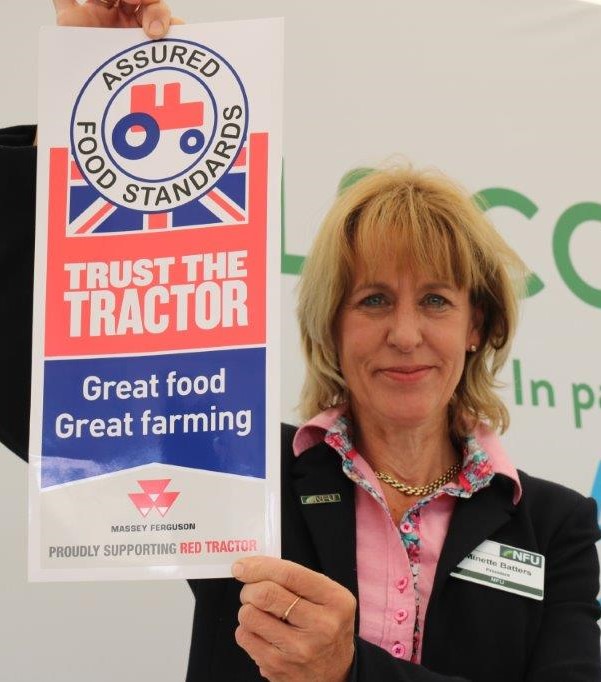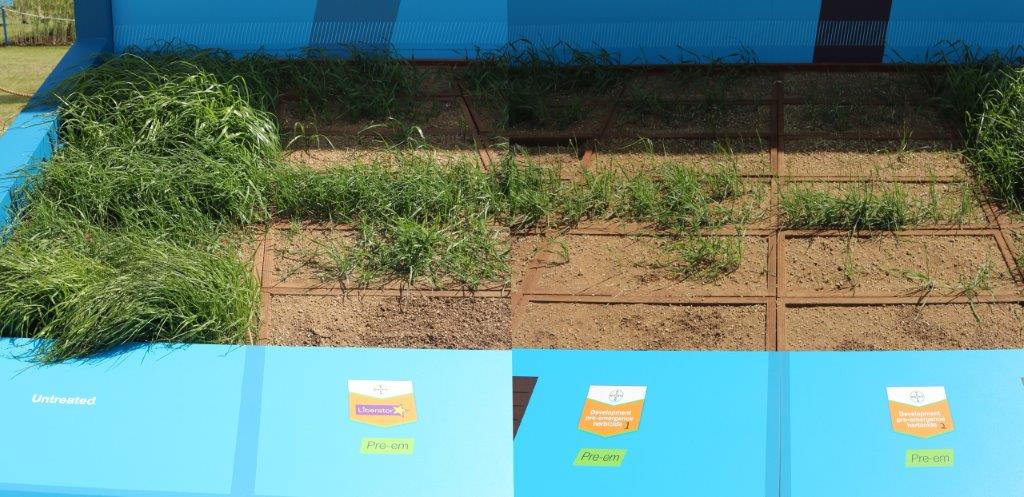It’s up to every UK arable farmer to highlight the value of their business and the appeal of the industry to Government to ensure the sector gets the opportunities it deserves as the new British Agricultural Policy comes together.
The NFU has launched its Your Harvest campaign, encouraging its members to get every MP in the country onto a farm this harvest to gain a better understanding of the priorities facing arable farming.
“We need all of you to make the industry sparkly and appealing,” said NFU president Minette Batters. “Michael Gove is a bit of a magpie – we have to show him that this industry is a glittering jewel.”
The campaign revolves around hosting farm visits for MPs to show them just how much food each farm produces and the environmental work undertaken. MPs should be encouraged to ride on a combine harvester, while the NFU is issuing large stickers to attach to grain trailers to get the food-production message over to consumers. Fact sheets are also available to help growers distil messages on farming’s ‘brilliant story’.

NFU president Minette Batters
“Without a thriving arable sector, the whole of farming suffers,” said Minette. “But Michael Gove, as Secretary of State for food and environment, has to get the food bit right first if he stands any chance of delivering a green Brexit.”
Over the past 20 years, farming has transformed the way it’s viewed in the eyes of the public, she said, but getting the connection over to consumers between what they see in the countryside and what’s served on their plates is particularly difficult for the arable sector.
“The world’s eyes are now on our plates and the market opportunity of the UK’s 65M consumers. We have been under-exporting for years, and Gove can turn that around.”
The new combinable crops chairman Tom Bradshaw told CPM the Your Harvest campaign was not just about highlighting food production. “It’s also about focusing on integrated pest management and showing policy makers that farmers don’t just run for the chemical can at the first opportunity. But equally, if we’re to produce safe, affordable food we need access to the tools that allow us to do that.”
There’s also a responsibility on growers to show they’re delivering on the Voluntary Initiative he pointed out. “We must demonstrate we’re highly trained and professional, using products in a safe and environmentally friendly way.” The VI itself needs a review to make sure it’s “fit for purpose”, but Tom believes that’s just a case of “tickling around the edges”.
Is your business fit for the future?
A series of debates and seminars throughout the two days of Cereals helped growers ensure their own businesses are fit for purpose. These kicked off with a ‘Cereals Controversial’ session in which HSBC’s Alan Wilkinson said farmers should focus on being the best regardless of what Brexit brings.
“Businesses that succeed just get on with it, without regard for what’s going on around them. The British food industry is up for grabs, and your local market is your biggest opportunity.”
AHDB’s Dr Martin Grantley-Smith reiterated the importance of business benchmarking, of being aware of your costs and the strengths of the business as Brexit approaches. “The farmers that will perform well are those who know their business well, who have plans in place and have access to the right information.”
Oxon grower James Price painted a bullish picture of his business, saying he could only see opportunities ahead. “But I know I don’t have a right to farm – if we can’t make it work, we’ll just have to stop.”
Nevertheless, there was a note of caution sounded from farm business consultants Andersons. It’s revised its Loam Farm model, based on a 600ha arable farm. “Harvest 2017 has proved better than expected for many arable businesses and profitability has been OK for a number of years,” said Richard King.
“The elephant in the room is what will happen in 3-5 years’ time when subsidy’s phased out. Many arable businesses are dependent on the Basic Payment for their profits. Radical reform of subsidy is a can that’s been kicked down the road so many times over the past 20 years it’s barely recognisable. Now it looks as though it’s going to happen, and farming has a long tail of businesses that are only kept in business by BPS. They are going to have to do something different, and that will release land for those who do a better job.”
His colleague Nick Blake said businesses should consider not just their profits but their cash generation as they go though a period of change and uncertainty. “For the top 25% of businesses the fundamentals haven’t changed. It’s a question of being able to look at things differently – walk away from an agreement that’s not working, for example.”
Long-term investments should also be looked at critically, he said. “With grain storage, for example, can you afford to take the risk? If you must invest, consider the exit strategy, so alternative uses for the building, for example. We’re also trying to encourage farming clients to hang on to their machinery for that little bit longer,” he said.
New Bayer blackgrass herbicides
 Two new pre-emergence herbicides for winter wheat designed to improve control of blackgrass were previewed on the Bayer stand. Due to be available next autumn is a Liberator (flufenacet+ diflufenican) plus metribuzin formulation (third from left in photo), containing 70g/l of the extra active.
Two new pre-emergence herbicides for winter wheat designed to improve control of blackgrass were previewed on the Bayer stand. Due to be available next autumn is a Liberator (flufenacet+ diflufenican) plus metribuzin formulation (third from left in photo), containing 70g/l of the extra active.
“The benefits are extra broadleaf weed control and about 5-10% additional efficacy on blackgrass,” claims Bayer’s Gordon Anderson-Taylor. “It comes into its own if the blackgrass has just started to emerge – the drop off in efficacy is less than you get with Liberator, although this is still a pre-em product.”
The second product (right hand side in photo) is a development material not used in cereals before and due to be commercially available in time for autumn 2021. “It’s still based on flufenacet, but offers extra control over the metribuzin product,” says Gordon.
“It’s a story of incremental gains – no product these days offers a solution to blackgrass on its own, but as part of a combined programme this new material should bring growers better control.”
The display on the Bayer stand demonstrated how the new products fared across a range of blackgrass populations found in the UK, compared with the standard Liberator and untreated. The population three up from the bottom originates from an undisclosed farm in Oxon, that may be wise to stick to its five-point plan to tackle blackgrass, regardless of new chemistry.
Growers offered triple-layer benefits
DSV was promoting its new ‘Triple Layer’ oilseed rape varieties which could be available to UK growers as early as this autumn. It’s a step on from the breeder’s post-neonicotinoid (PNN) varieties, explains DSV UK managing director Mike Mann.
“Triple Layer refers to a combination of disease resistance traits and physical properties enabling production of high yields and oil contents with a minimum of agronomic intervention and management input.”
The three varieties now going through UK testing will be the first to combine Rlm7+ phoma stem canker and light leaf spot resistance with turnip yellow virus resistance and pod shatter resistance, he says.
Annual losses due to the ban on neonic seed treatments in OSR are estimated at €876M across Europe, says DSV international OSR product manager Dr. Alex Döring. “The layering process is a continuation of DSV’s PNN initiative where we started to breed varieties with strong early vigour, good compensation ability and optimised plant architecture.”
All varieties with layering still have these characteristics, but with additional layers of disease resistance and yield protection traits, he adds.
Temptation, currently on the AHDB Candidate List, is DSV’s first TuYV-resistant variety for UK growers, says the company’s Sarah Hawthorne.
The first two triple-layered varieties, DSV22 (Dazzler) and DSV27 (Darling) are currently in the second year of National Listing. “We’re hoping the first of these will make it on to the Candidate List this Dec.
“We plan to add additional layers such as verticillium wilt tolerance and clubroot resistance in the future. Developing the first multi-layered Clearfield variety is a real prospect too.”
Ground-breaking way to new OSR
Fifty oilseed rape growers across the country will get the chance to grow commercial crops of two new RL candidate varieties from Dekalb. The breeder is making 1.5M-seed packs (enough to plant around 2-3ha each) of DK Exsteel and DK Exstar available to a select few free of charge for planting as part of their 2018/19 crop, ahead of their commercial launch in 2019.
The varieties have official light leaf spot resistance scores of 7 and 8 respectively, stem canker resistance scores of 8 and lodging resistance scores of 8 and 9. They also have Dekalb’s vigorous establishment trait, both varieties are notably rapid to develop and carry double phoma and pod shatter resistance as part of what Dekalb calls a yield-protection package.
“In parallel to small-plot testing in official and distributor trials, we want to give a broad cross-section of growers across the country the opportunity to evaluate the varieties for themselves at a field scale under their own production regimes,” says Dekalb marketing manager, Mark Shaw.
“We’ve designed Ground Breakers to do just this. From all the growers formally registering their interest in the programme we will select participants giving a wide geographical coverage, range of growing conditions and establishment regimes.
“We’ll supply each with a 1.5M-seed pack of both varieties completely free of charge to sow this autumn in return for their commitment to provide us with structured feedback on relative crop performance at key points in the growing season.”
Look out for more exclusive information on Ground Breakers in future issues of CPM, while the 2018 registration forms are available on-line at https://www.dekalb.co.uk/dekalb-groundbreakers
Finding a new angle on root architecture
A massive variation in root architecture has been found across the population of new wheat varieties bred as part of the BBSRC-funded Designing Future Wheat (DFW) and Cambridge-India Network for Research in Nitrogen (CINTRIN) programmes.
Eight UK research institutes and universities are developing the germplasm and techniques required by breeders for the next generation of varieties. Included in the programme are the Synthetic wheats developed by NIAB, in which diversity has been reintroduced into commercial wheat lines. Germplasm has been produced from crossing durum wheat with wild goat grass – the cross which brought modern hexaploid wheat into existence10,000 years ago.
“You can learn a lot from assessing the root crown,” explains NIAB’s Dr Robert Jackson. “Wheat root crowns can be narrow, growing quickly to depth, or they can be very wide angle, exploring near the surface.”
Researchers screened varieties across the population by planting them in clear plastic pots. “We discovered the angle varies across varieties by as much as 75°. The widest crowns formed a fan of around 80°, while the narrowest roots were focused into a thin cone of less than 30°.”
Work is now underway to explore further how this impacts on a crop’s ability to take up nutrients and water, especially in stressed conditions. The CINTRIN network operates in collaboration with Indian researchers to look at cereal crop N use. “We’ve taken four of the narrowest rooters and four with the widest crowns and are testing them in different N regimes,” says Robert. “There are significant differences, although we don’t have all the yield results yet.”
Root architecture is an area of crop physiology in which there’s still relatively little understanding, and the work on the diverse wheat population will help scientists phenotype varieties by their root architecture and understand more about their efficiency and resilience, notes Robert.
“It’s a popular misconception that wheat roots chase receding moisture to depth as soils dry up. They don’t react in that way.”




